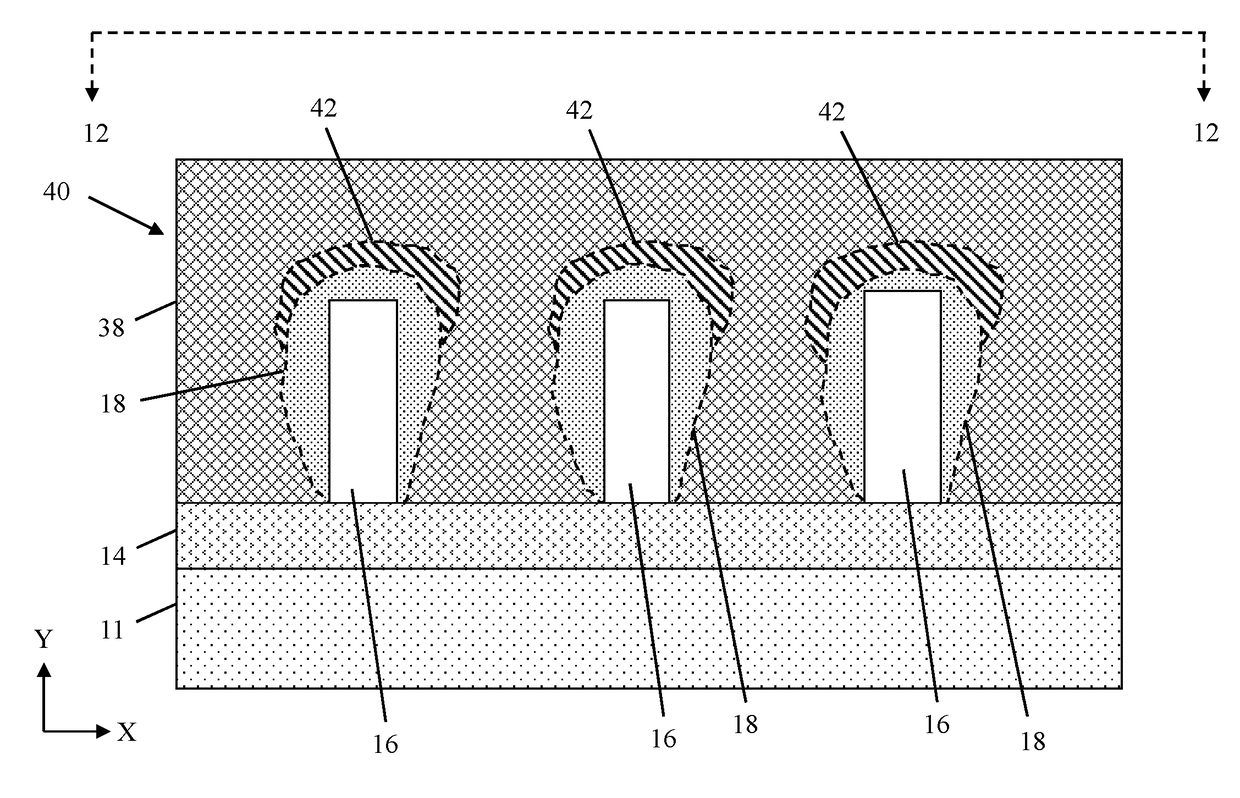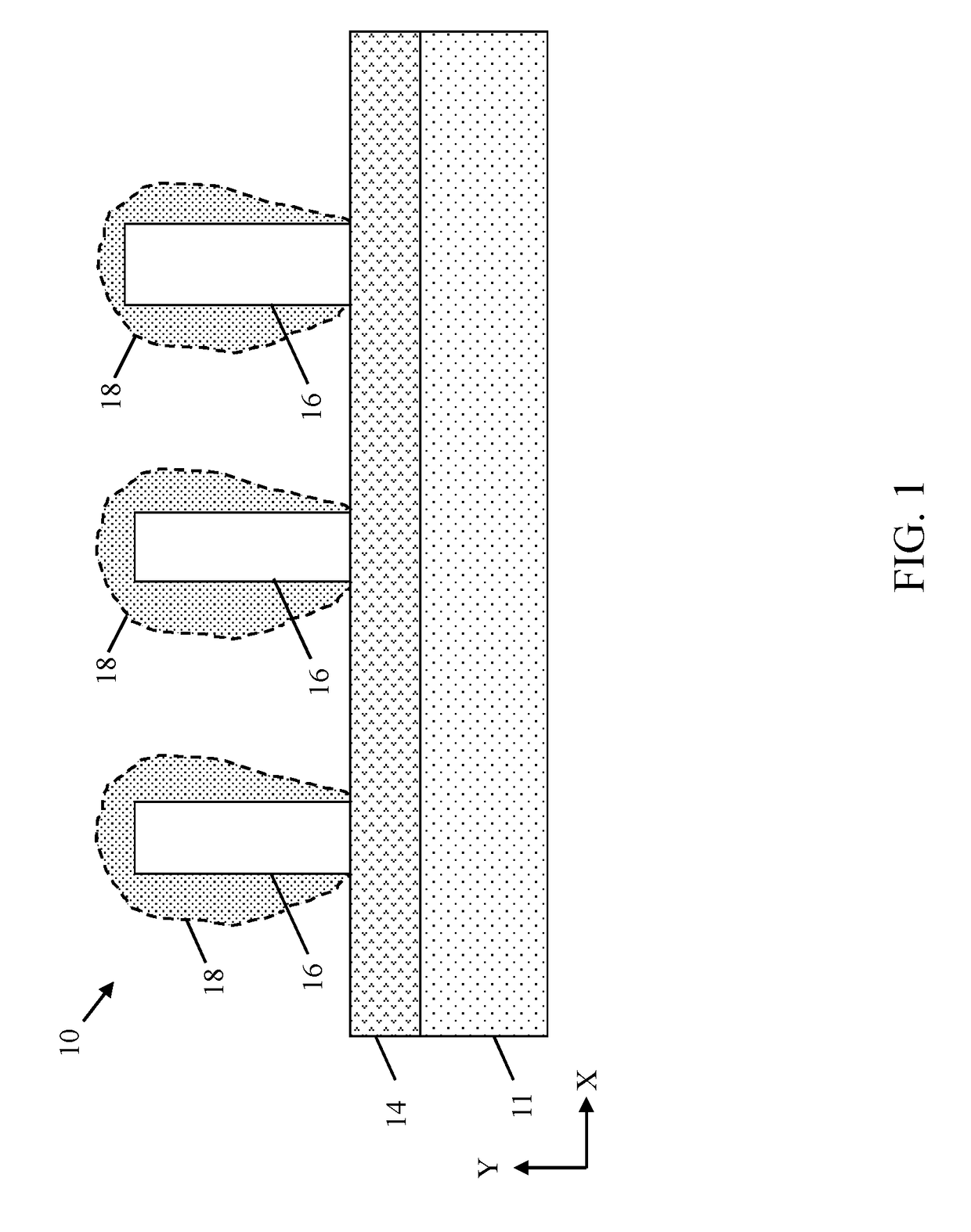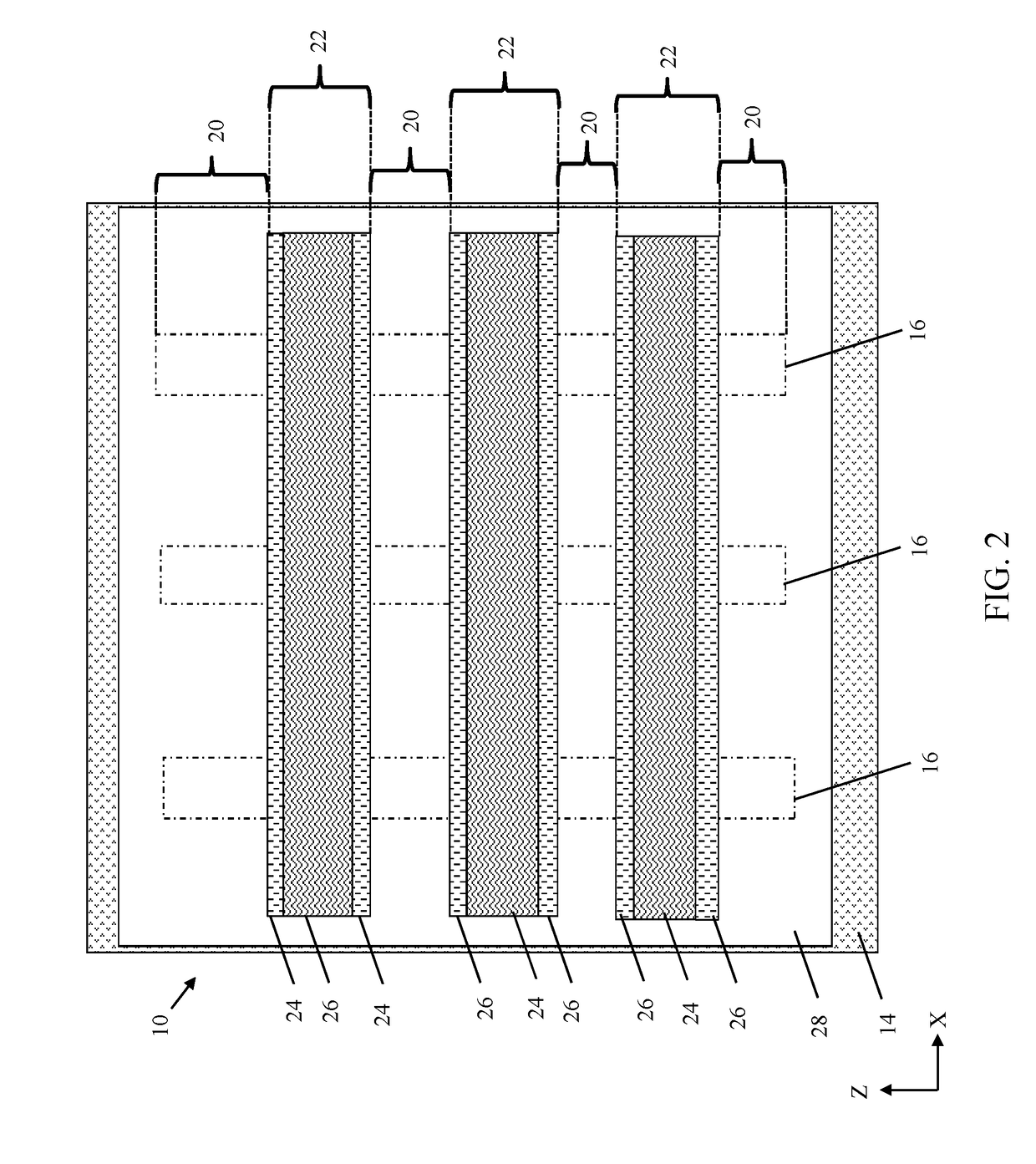Transistor structure with varied gate cross-sectional area
a transistor and cross-sectional area technology, applied in the field of transistors with varied gate cross-sectional areas, can solve the problems of limiting the size of particular structures, affecting the performance of the transistor, and presenting conflicting demands for high-performance fets and high-yield processes in particular, so as to reduce the cross-sectional area of the gate area
- Summary
- Abstract
- Description
- Claims
- Application Information
AI Technical Summary
Benefits of technology
Problems solved by technology
Method used
Image
Examples
Embodiment Construction
[0021]Embodiments of the present disclosure provide transistor structures for integrated circuits (ICs) to enhance manufacturability and performance. The present disclosure also contemplates methods for fabricating the transistor structure described herein. Generally, a transistor structure according to the present disclosure can include a semiconductor fin positioned on a substrate, and subdivided into two areas: a “gate area” dimensioned to have a first cross-sectional area, and a “terminal area” positioned laterally distal to the gate area and featuring a second cross-sectional area different from the first cross-sectional area. The gate area and terminal area of the semiconductor fin may otherwise have substantially identical material compositions. A transistor gate can be positioned on the first gate area of the semiconductor fin, while a contact can be positioned on the terminal area of the semiconductor fin. The differences in cross-sectional area throughout the semiconductor...
PUM
 Login to View More
Login to View More Abstract
Description
Claims
Application Information
 Login to View More
Login to View More - R&D
- Intellectual Property
- Life Sciences
- Materials
- Tech Scout
- Unparalleled Data Quality
- Higher Quality Content
- 60% Fewer Hallucinations
Browse by: Latest US Patents, China's latest patents, Technical Efficacy Thesaurus, Application Domain, Technology Topic, Popular Technical Reports.
© 2025 PatSnap. All rights reserved.Legal|Privacy policy|Modern Slavery Act Transparency Statement|Sitemap|About US| Contact US: help@patsnap.com



